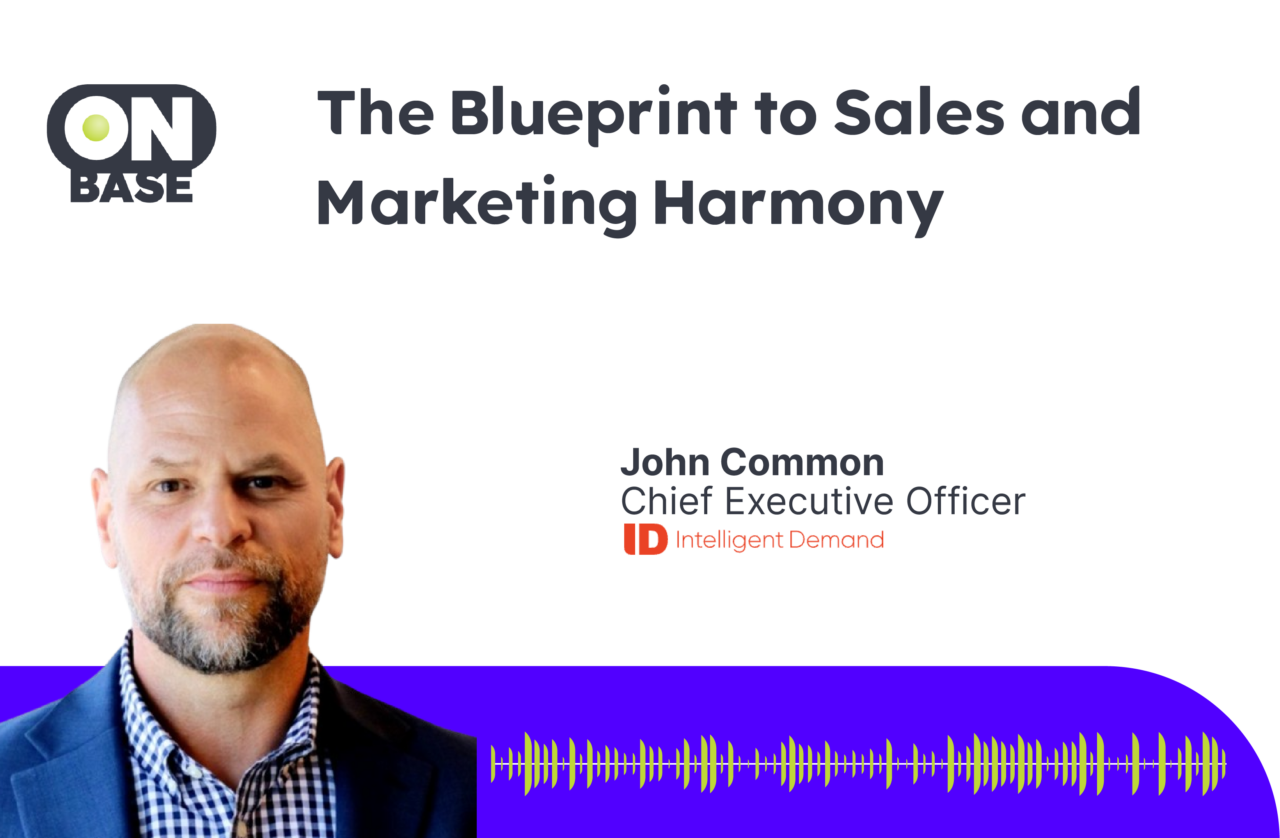
The Blueprint to Sales and Marketing Harmony
Shownotes
In this episode, host Chris Moody talks with John Common of Intelligent Demand about the ongoing challenge of aligning sales and marketing teams. They discuss why misalignment often stems from a lack of clear strategy and leadership guiding the organization. John emphasizes that B2B growth requires cross-functional collaboration but most companies still operate in silos. John also dives into common mistakes made with account-based marketing programs when they are treated as solely a marketing initiative. He outlines why traditional metrics like marketing qualified leads are outdated.
Best Moments
-
John emphasizes that B2B growth is a team sport and cross-functional alignment is mandatory.
-
John analyzes where misalignment often comes from, such as a lack of clear strategy and leadership guiding the organization.
-
John dives into common mistakes with ABM programs, like treating it as solely a marketing initiative.
-
John and Chris agree that companies need to critically examine outdated assumptions around their go-to-market approaches.
-
John highlights that metrics like MQLs are "old technology" and it's time to update traditional playbook methods.
About the guest
John Common, CEO and founder of Intelligent Demand brings 20 years of expertise in growth strategy, technology, marketing, sales, and customer success. His career focuses on driving measurable revenue growth for tech and service firms, both internally and as an agency partner. Under his leadership, Intelligent Demand has emerged as a premier revenue growth agency, prioritizing its people, culture, and client success. John also hosts “Growth Driver,” a podcast for B2B executives eager to drive growth, featuring thought leaders and experts.
Key takeaways
- B2B growth requires cross-functional alignment and collaboration, but most companies still operate in silos due to a lack of clear go-to-market strategy and leadership.
- Common mistakes with account-based marketing programs include treating it as solely a marketing initiative, not setting clear growth goals, and relying on outdated metrics like MQLs.
- Companies need to critically examine their assumptions around go-to-market approaches and commit to developing integrated growth strategies, as traditional playbook methods are no longer effective.
Quotes
“B2B growth is a team sport, there is no go-to-market motion where cross-functional alignment is not.”
-John Common
Highlights from this episode
What are the ongoing challenges with sales and marketing alignment?
According to John Common, some of the ongoing challenges with sales and marketing alignment include:
- Misalignment often stems from a lack of clear strategy and leadership guiding the organization. Most companies don’t have an integrated go-to-market strategy to unite teams.
- While B2B growth requires cross-functional collaboration as a “team sport”, most companies still operate in functional silos due to organizational structures and incentives.
- It’s difficult for companies to break out of “siloed heroics” where individual teams focus just on their metrics rather than overall growth goals.
- Ongoing change management is needed from senior leadership to continuously train teams to work together rather than fall back into disconnected efforts.
Where does misalignment really come from?
Misalignment typically starts from a lack of strategy and leadership. Specifically, John believes misalignment comes from:
- A failure of strategy – Most companies don’t have a clear go-to-market strategy to guide cross-functional alignment. They set high-level growth goals without an integrated plan.
- A failure of leadership – Senior leaders don’t provide the ongoing change management needed to train teams to work together cross-functionally instead of operating in silos.
- Organizational structures – Functional silos inherent in most company org charts pull people back into disconnected efforts, despite the good intentions of individuals.
- Disconnected tactics – Without a unified strategy and leadership, teams end up hurling disconnected strategies and tactics rather than integrated, data-driven plays.
What has caused organizations to fail to move from leads to accounts?
Some common causes of organizations failing to move from leads to accounts include:
- Treating ABM as a marketing initiative alone, rather than a joint sales and marketing approach.
- Not being clear about specific and achievable growth goals for the ABM program, such as which products/regions to focus on.
- Having an unclear or incorrect definition of the ideal client profile (ICP) that is not based on sales input.
- Not defining an integrated “play” that outlines coordinated roles and actions for sales, marketing, and other teams.
- Continuing to pass solo marketing-qualified leads to sales rather than moving entire buying teams as opportunities.
- Relying on outdated metrics like MQLs that are not aligned to the buying process versus metrics that measure moving accounts through the pipeline.
Resource recommendations
Books
–Kotler on Marketing by Philip Kotler.
–Sales Pitch by April Dunford.
–Obviously Awesome by April Dunford.
Podcast
–Growth Driver
–Lenny’s Podcast
Shout-outs
–Sam Jacobs, Founder and CEO of Pavilion.
– Scott Albro – Founder and CEO of Goldie
– Mark Stouse – Chairman and CEO of ProofAnalytics.ai

OnBase
Bridging the Divide, Between Sales and Marketing



